The more than 10,000 regional parks in the nation are visited by about three times as many people annually as the 63 national parks that receive all the attention and the Ken Burns documentaries. More than eighteen million acres, or more than the combined areas of Rhode Island, Delaware, Connecticut, New Jersey, and New Hampshire, are covered by them all over the United States.
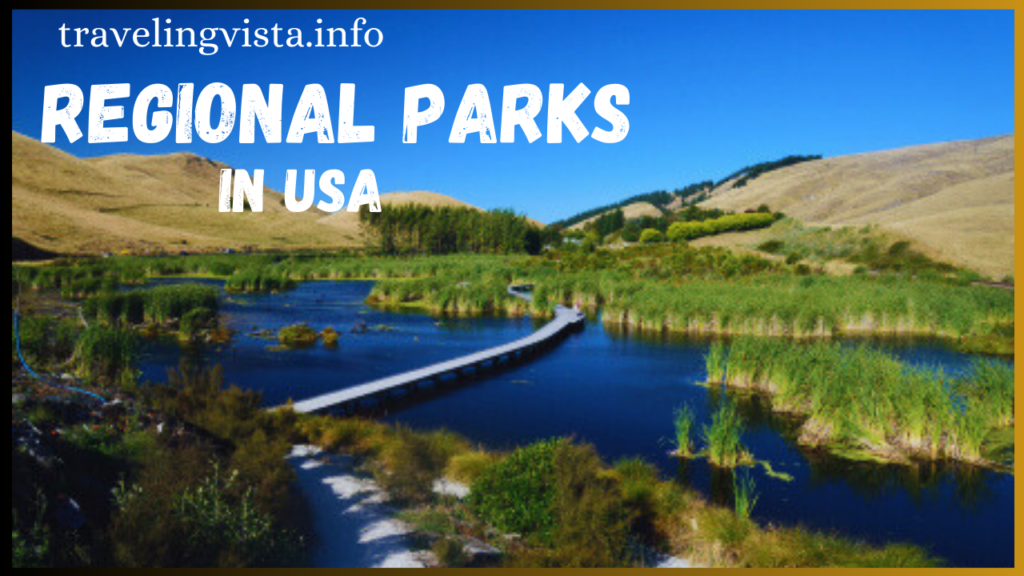
While these areas have always been priceless, their significance has increased recently as anxious Americans have been rushing to quench their wanderlust and rediscover their love of the great outdoors. Our personal backyards have been extended by regional parks, which provide both intimate and expansive experiences. And when travel farther afield resumes, they’ll still be enticing gateways to the outdoors, frequently with less visitors than their more well-known.
Julia Pfeiffer Burns regional Parks:
Not far off the road in Big Sur, this little treasure of a regional parks boasts spectacular McWay Falls, an 80-foot waterfall that pours right into the ocean, as if 300-foot redwoods and world-class scuba diving from a gorgeous secluded beach cove weren’t enough. Although it’s not easy to get to the beach, the benefits are enormous. Simply glance at the picture.
Makoshika regionals Parks:
Imagine strolling among triceratops and Tyrannosaurus rex slumbering peacefully, trying not to disturb the bubbling streams or the warm winds streaming through the high-palm trees and ferny understory. Now go back 66 million years in time.
It consists of 12,000 acres of badlands made of mudstone and sandstone, dotted with orange-gray tent rocks that like enormous mushrooms growing out of a petrified fantasy world. Fossils can be found buried under and around these tent rocks. When the day is almost over, head to Sunset Overlook via the Diane Gabriel Trail. Look for hadrosaur bones and don’t leave without spotting the K-T boundary, a thin strip in the rock that marks the spot’s former heavyweight champions’ demise.
Baxter regional Parks:
Nestled among serene lakes and waterfalls, this 200,000-acre park is home to a diverse range of wildlife, including black bears and hawks. Notably, Mount Katahdin, the highest peak in Maine and the northernmost point of the Appalachian Trail, is located within its boundaries. This is your chance to see Thoreau in its entirety, as the park lacks electricity, running water, and paved roads.
Iao Valley regional Parks:
The word “lush” doesn’t begin to describe this park in the West Maui Mountains. This well-known Hawaiian park is dominated by the 1,200-foot vegetation-covered Iao Needle, a lava relic that rises from the valley floor to a height higher than the Eiffel Tower. One of America’s most unique due to its deep rainforest canopy. Explore this tranquil 10-mile park’s easygoing pathways and take a picture of it.
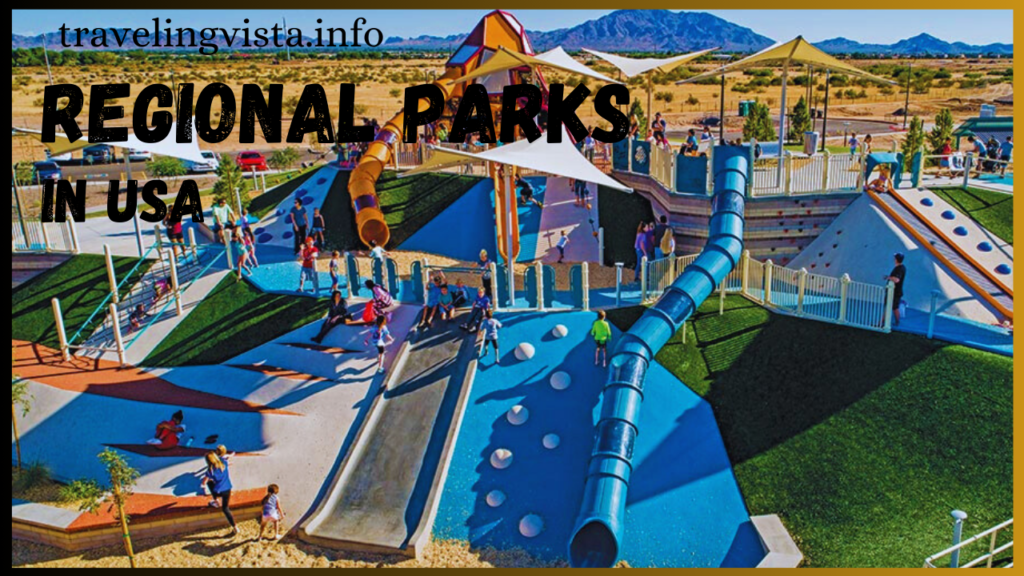
Valley Of Fire regional Parks:
Valley of Fire is Nevada’s oldest and largest state park. It is well-known for its hallucinogenic desert mirages, both natural and man-made. The park’s name comes from the massive, striped red rock formations that cover the area, giving the impression that Mother Nature melted candy canes and poured them out across the landscape. After checking out some of the nicest vistas at Rainbow Vista and attentively examining some 3,000-year-old petroglyphs, it’s only an hour’s drive to Vegas.
Peninsula regional Parks:
Even by Door County standards, Peninsula State Park is breathtaking, but the Midwest’s version of Cape Cod offers plenty of unexpected geographical paradoxes in a state with a wonderful coast that is sometimes disregarded. There is plenty to explore, but the Eagle Trail—a two-mile trek that begins atop a dolomite cliff and descends 200 feet through dense woodland to the Lake Michigan shoreline—offers the most breathtaking views.
Under the shadow of the 250-foot-tall Niagara Escarpment, you can see the remnants of ancient sea caverns. Kayaking offers an even more picturesque perspective of this UNESCO World Biosphere Reserve, as the soothing sound of the waves carries you along. Be cautious where you walk because exposed roots and loose rocks can make you forget to take in the scenery.
Eldorado Canyon regional Parks:
Colorado has four national parks, so the state parks are extremely densely packed for such a large state. Situated only a short distance from Boulder, Little Eldorado Canyon State Park is a premier destination for rock climbing enthusiasts. It boasts more than 1,000 challenging climbing routes, 11 miles of hiking and mountain biking trails, and picturesque South Boulder Creek for fishing. The Mountain Sun Pub & Brewery in Boulder is about 20 minutes away, in case you become thirsty.
Cayo Costa regional Parks:
Reached solely by boat or helicopter, Cayo Costa is a short journey from the well-liked vacation spot, Captiva Island, but it’s a far cry from the Florida you had as a child over spring break. Walking along immaculate white-sand beaches, you’ll come across ghostly tree skeletons and playful dolphins that are frequently spotted swimming along the shore.
As birds move from limb to limb, you might also be lucky enough to view a manatee or bald eagle in the tall trees. The main recreational activity is sunbathing, but you may also camp in one of the 30 highly recommended tent sites or on your boat.
Niagara Falls regional parks:
Easy decision? Obviously. Requirement to choose? Without a doubt. The place may have been tainted by the hordes of selfie-taking visitors you remember from high school, but there’s a reason America’s oldest state park is still well-liked: 750,000 gallons of water flow over the falls every second. Getting up close and personal—and drenched—with some of the most well-known waterfalls on the planet is an experience that should not be missed. Finding out that the park is actually pretty wonderful as a whole is just a bonus.
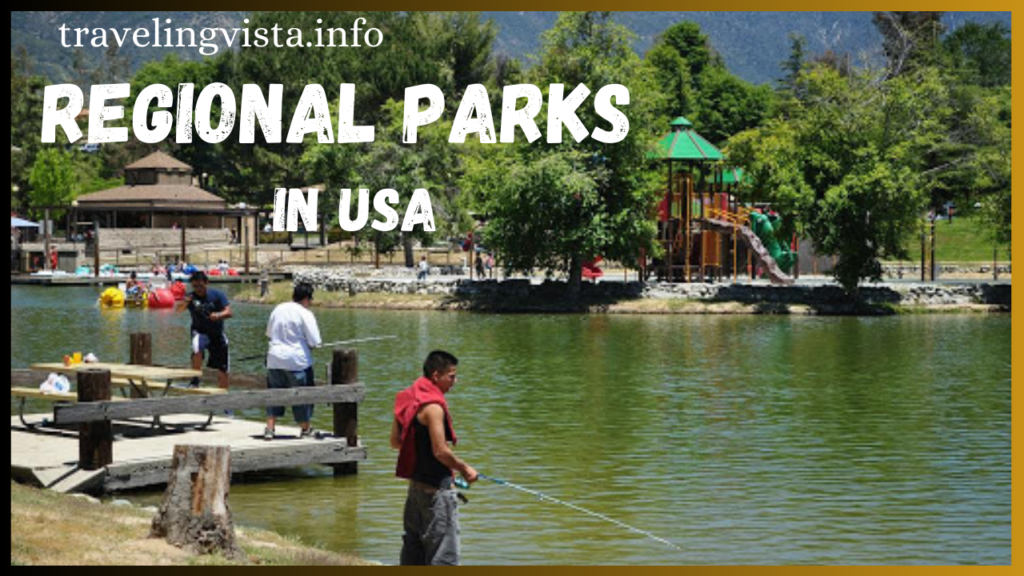
Castle Rocks regional Parks:
Although Idaho has many state parks, which contribute to the state’s reputation as one of the least visited in the united, Castle Rocks, which is located near Priest Lake, is particularly breathtaking. Here, in the heart of the Albion Mountains, a sea of wildflowers blooms in the spring, offering a striking contrast to the dizzyingly steep rock formations that entice climbers of all stripes. Wild horses are frequently spotted grazing in the grasslands, and camping is possible in both the backcountry and in yurts.
Kachemak Bay regional Parks:
This enormous 400,000-acre park has everything you could ever want in terms of wilderness. There is no road access to much of the park, which is what keeps it clean and home to whales, sea lions, moose, and an extraordinarily wide variety of sea birds. You will need to fly in or travel by boat (probably from Homer). Its primary draw is still its biological diversity; you may find everything you’re looking for here, including vast ice fields and glaciers, lush woods, and sandy beaches.
Anza Borrego Desert regional Parks:
The largest state park in California and the second largest in the lower 48, sprawling across a stark 600,000 acres, is a treasure in the American state park system, located approximately an hour south of Coachella. It offers some of the greatest stargazing in the United States at night, and there are 110 miles of hiking trails and 12 designated wildlife areas to explore during the day.
With approximately 500 different types of fossils dating back up to 6 million years, the park is also a highly significant geological site. In addition, as you explore the harsh landscape of the park, more than 130 enormous metal animal sculptures will appear out of nowhere, adding to the surreal sense of the ancient era.
Ecola regional Parks:
This breathtaking state park, which spans nine picturesque miles of Pacific Northwestern coastline from Cannon Beach to Seaside, is situated just outside the charming coastal town of Cannon Beach. It offers hidden coves, dense spruce forest, and grassy cliffs overlooking its alluring beaches.
This movie star-worthy park offers breathtaking views of Haystack Rock, the rally point of The Goonies, and the opportunity to recreate the Point Break sequence on the beach that doubles for Australia. A bonus is that Oswald West State Park, which is also extremely cool, is about 15 minutes south by car.
Little Missouri regional Parks:
This lesser-known park is renowned for its windswept badlands vistas and breathtaking landscape that is just waiting to be discovered via its 47 miles of hiking and horseback riding paths, At this isolated BYOH (bring your own horse) outpost, there aren’t many laws, but one is that your horse must be fed only weed-free hay that is certified and sold at the park.
Emerald Bay regional Parks:
One of Lake Tahoe’s most well-liked attractions is Emerald Bay for a reason. In addition to being home to the sole island on the lake, Fannette Island, and the bizarre 38-room VI Kingsholm palace, Emerald Bay is notable for being one of the first state parks to have its underwater shipwrecks protected. The main pastimes here are to stare at the deep blue hues of the lake while you get the bravery to dive into its cool waters, or camping, which is another word for drinking on your boat.
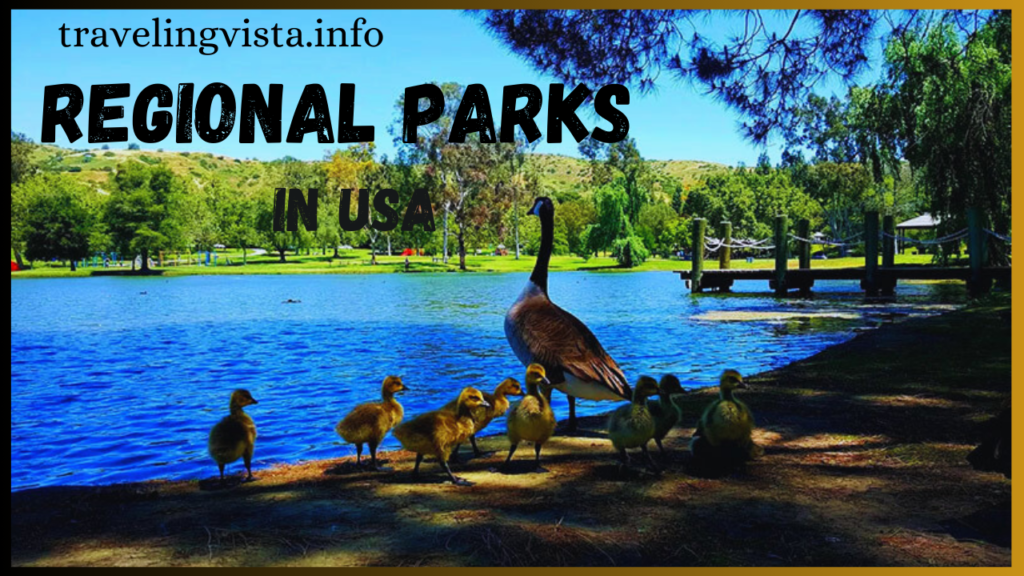
Caddo Lake regional Parks:
Covering about 30,000 acres, this state park on the eastern border of Texas is the complete antithesis of the barren west Texas deserts. It is a labyrinth of bayous and sloughs, peaceful marshes, and rivers that are breathtaking during the day and eerie at night.
Enjoy the serene, foggy Caddo Lake while paddling your kayak and scuttling under the Spanish moss that dangles from the ancient bald cypress trees in a serpentine fashion. This is the world’s largest cypress grove; these giants tower above you and stand waist deep in every direction. Try to locate Dick & Charlie’s Tea Room, a former speakeasy from the Prohibition era situated on a stilt house over the sea. “House Rules.
Simth Rock regional Parks:
Smith Rock offers low-impact family treks and breathtaking scenery at every turn, in addition to being one of the top rock-climbing destinations in the West and widely recognized as the birthplace of American sport climbing.
As you try not to drain your iPhone’s battery taking shots of the angular rock formations that are springing up in this high-desert frontier of Central Oregon, watch golden.
Palouse Falls regional Parks:
Thanks to their enormous national parks, stunning coastline, charming alpine villages, and majestic Twin Peaks, Western and Northern Washington often garner the most attention. But the east side of the state does its share, and one look at Palouse Falls explains why.
In this area, the state unveils what seems to be a scaled-down replica of the Grand Canyon, complete with a 200-foot waterfall that cascades into an incredibly transparent punchbowl, and without any RV-dwelling tourists. Furthermore, compared to that huge hole in the earth in Arizona, this 94-acre property has far greater exploration potential.
FAQS:
How many regional parks are there in USA?
The magnificent park systems created in each of the 50 states are unified by their power, which is exemplified by America’s State Parks. America’s State Parks strive to improve the quality of life in the country with 9,817 units covering 20,142,089 acres and over 867 million visits.
How many national parks are there in USA?
Since then, 431 units (often called parks), more than 150 linked areas, and a plethora of programs have been added to the National Park System, helping to preserve the country’s natural and cultural history for the benefit of present and future generations.
Who is USA famous park?
One of the most popular national parks in the United States, it is recognized worldwide for the extraordinary variety of its flora and fauna, historic mountains, and Southern Appalachian culture.
Which US city has the most parks?
697 parks in Washington, DC
301 parks in Minneapolis, Minnesota
356 parks on St. in Irvine, California
Virginia’s Arlington, with 186 parks
Washington, Seattle (874 parks)
California’s San Francisco (495 parks)
Which city has the best parks?
- Minneapolis, MN.
- St. Paul, MN.
- Irvine, CA.
- Arlington, VA.
- Seattle, WA.
- San Francisco, CA.
- Cincinnati, OH.
- Portland, OR.
Conclusion:
There are 63 national parks in the United States. The National Park Service, a division of the Department of the Interior, is in charge of managing these legally recognized protected places. Natural beauty, distinct geological features, varied ecosystems National parks are designated for their scenic value and recreational activities; these designations are typically granted “because of some outstanding scenic feature or natural phenomena.”
Although all National Park System units are equal under the law and have the same goals, national parks are often larger and more of a tourist attraction, and extractive industries like hunting are forbidden. In However, due to its historical or archeological significance, national monuments are also often safeguarded. These are the regional parks in United states. I hope it will beneficial for you. In case of any difficulty contact us through our link on website. Thanks.

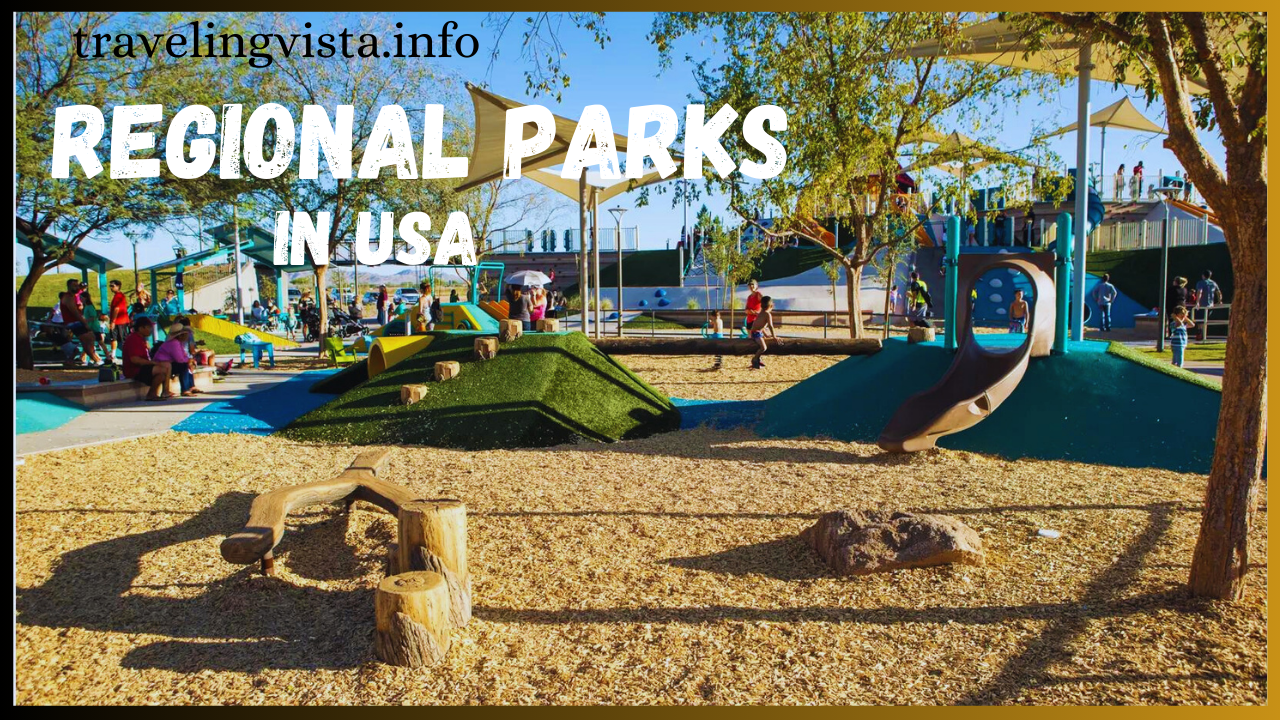
I pull them were having understood what now before